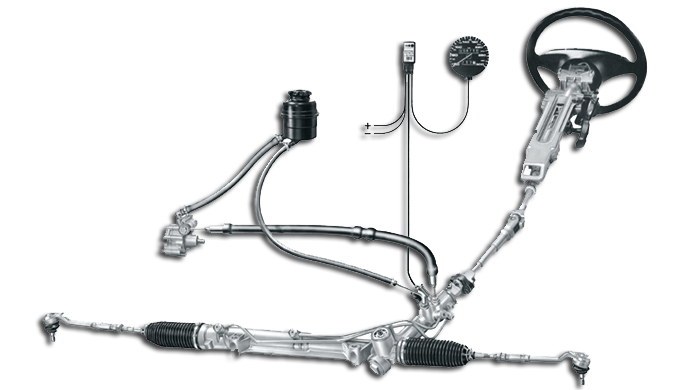- الصفحة الرئسية
- المتجر
-
المحرك ونظام الدفع
- مبرد الهواء , المراوح , نظام التبريد ومكوناتها
- العادم , رؤوس العادم , مجمع العادم
- أنظمة حقن الوقود ومكوناتها
- التدفئة والتكييف ومكوناتها
- فلاتر الهواء, فلاتر الزيت وأنظمة السحب
- وحدات التحكم الإلكتروني ، أنظمة الإشعال وموزع الشرارة
- العواميد المرفقية والمكابس والزيوت ومكوناتها
- الكامات , جنازير الصدر وعواميد الكامات
- القوابض والحذافات والمكونات
- المفاتيح , المرحلات , الأسلاك ومكوناتها
- حساسات الأكسجين ومكوناتها
- مجوعات المحرك وناقل الحركة
- قطع المحرك الأخرى
-
الفرامل و نظام التعليق والتوجيه
- أقراص الفرامل والفرامل و المشابك
- ممتصات الصدمات ومكوناتها
- أذرع التحكم وأذرع الدفع ومكوناتها
- محاور وحاملات الأعجال ومكوناتها
- أذرعة التوجيه , مجموعة نظام التوجيه ومكوناتهم
- المحاور , عمدان نقل الحركة , وأنظمة الدفع الرباعي
- مضخات نظام التوجيه
- أنظمة التعليق الهوائي ومكوناتها
- الفرامل والتعليق وأجزاء التوجيه الأخرى
- مضخة ABS ومكوناتها
-
المحرك ونظام الدفع
- مدونه
- الفهرس
- تواصل معنا
- مقارنه: 0
منتج
الاقسام
حدد سيارة للعثور على الأجزاء المناسبة بالضبط
سائل التوجيه المعزز: كيفية اختياره وتغييره
يهدف نظام التوجيه المعزز إلى أن يستمر طوال عمر السيارة بالكامل ، ولكن فقط في حالة عدم وجود أي تسرب للسوائل. يعد استخدام سائل دون المستوى أو عدم استبداله بانتظام من أكثر الأسباب شيوعًا لعيوب التوجيه المعزز. اقرأ مقالتنا لتتعلم كيفية تجنب الأخطاء عند اختيار واستبدال السائل الهيدروليكي.

أسباب تدهور المائع الهيدروليكي في التوجيه المعزز
تؤدي الأحمال الشديدة على التوجيه المعزز والانخفاض الحاد في الضغط في النظام إلى تدهور جودة الزيت بشكل مبكر. يحدد خبراؤنا أربعة أسباب رئيسية لتدهور النفط:
- ارتفاع درجة الحرارة.
- استخدام مكثف للغاية لنظام التوجيه المعزز (أسلوب الغوص العدواني) ؛
- ضرر سلامة النظام ؛
- عدم امتثال السوائل للمتطلبات الفنية للسيارة.
- تستخدم الصمامات الالتفافية الواقية في السيارات الحديثة لحماية مكونات النظام من التلف.
متى يتم تغيير السائل في نظام التوجيه المعزز
يوصي معظم صانعي السيارات ، بما في ذلك Mitsubishi و Volkswagen و Ford ، بتغيير السائل مرة واحدة كل عام إلى عامين أو كل 100000 كيلومتر. قد تشير العلامات التالية إلى ضرورة إجراء بديل غير مخطط للزيت:
- تغيير اللون وتغميق الزيت ؛
- ظهور رائحة حارقة
- زيادة مقاومة عجلة القيادة.
- أصوات غير طبيعية عند تدوير عجلة القيادة ؛
- تسرب السوائل.
تحتاج أيضًا إلى تغيير السائل في حالة إجراء إصلاح للمضخة أو أي مكونات أخرى لتوجيه الطاقة. يمكن أن يؤدي استخدام الزيت الذي فقد خصائصه الأصلية أو غير المناسب إلى تلف المضخة أو البكرات ويؤدي إلى التآكل المبكر لعناصر الختم. في بعض المركبات ، مثل Toyota Corolla و Subaru Impreza وجميع سيارات فولكس فاجن تقريبًا ، لا توجد إمكانية لاستبدال عناصر الختم. إذا تآكلت ، فسيتعين عليك تثبيت نظام توجيه معزز جديد.
كيفية اختيار سائل التوجيه المعزز
هناك عدة أنواع رئيسية من السوائل:
المعدنية. وهي تشمل كسور بترولية مكررة وإضافات تعمل على تحسين خصائص أداء الزيت. الميزة الرئيسية للسوائل المعدنية ، بالإضافة إلى السعر ، هي أنها لا تملك تأثيرًا قويًا على عناصر المطاط. ومع ذلك ، فإن لها عمر خدمة قصير وعرضة لزيادة تكوين الرغوة.
شبه الاصطناعية. يشمل تركيبها كلاً من المواد المعدنية والاصطناعية. وتتمثل مزاياها في انخفاض درجة اللزوجة ومقاومة تكوين الرغوة والتشحيم الجيد. ومع ذلك ، فإن السوائل شبه الاصطناعية لها تأثير مدمر على العناصر المطاطية في نظام التوجيه المعزز.

استبدال سائل التوجيه المعزز بنفسك.
يمكن لأي شخص استبدال سائل التوجيه بنفسه. هذه العملية بسيطة وتستغرق حوالي 30 دقيقة. ستحتاج للإجراء إلى حقنة كبيرة ووعاء لتصريف السوائل القديمة والقفازات الواقية.
التزم بالتسلسل التالي من الخطوات:
- ارفع مقدمة السيارة باستخدام رافعة وقم بتثبيتها.
- باستخدام حقنة ، قم بضخ السائل القديم من الخزان.
- افصل خرطوم تدفق الإرجاع وضعه في حاوية معدة مسبقًا. صفي الزيت.
- صب سائل جديد في النظام.
- لف عجلة القيادة حتى تتوقف عدة مرات.
- عند تصريف السائل القديم ، صب السائل الجديد في العلامة الموجودة على سطح خزان مائع التوجيه المعزز أو على مقياس العمق المثبت في غطاء الخزان. أعد ملء الزيت حتى يتدفق السائل الجديد خارج الخرطوم.
- ثبت الخرطوم في مكانه ، وابدأ تشغيل المحرك وأدر عجلة القيادة في كلا الاتجاهين.
- مرة أخرى ، املأ السائل حتى العلامة.
خاتمة
قم بشراء زيت عالي الجودة فقط ، ضع في اعتبارك دائمًا المتطلبات الفنية لسيارتك ، ولا تهمل التوصيات الخاصة بتغيير الزيت. يضمن أسلوب القيادة الهادئ ، واستبدال السوائل في الوقت المناسب والامتثال للقواعد التي يختارها ، تشغيلًا طويلاً وموثوقًا لنظام التوجيه المعزز.




1984375259.png)
135111072.png)
1235885726.png)
732991495.png)
148086775.png)
لا توجد تعليقات